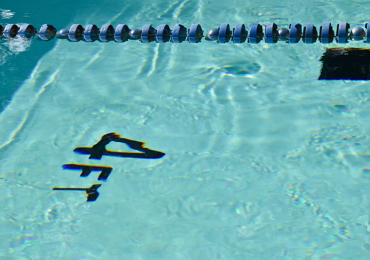What is a Swimlane Diagram?
This article is about swimlane diagrams and some examples. You will learn how to make a perfect swimlane diagram with EdrawMax.
1. What are Swimlane Diagrams?
A swimlane diagram, sometimes also referred to as swim lane diagram, uses flowchart symbols and icons to represent complex, multi-departmental processes that work together to achieve a goal. A simple example would be that of a garment manufacturer where several departments are involved in doing things like purchasing, laundry, stitching, packaging, etc. to prepare clothes that could be sold to the consumers.
Since each department is represented by its own lane in the diagram, and multiple divisions form several roads, the entire chart is called a Swimlane Diagram. A swim lane diagram can be drawn either horizontally where the tracks (lanes) are placed one below the other, or vertically where they appear adjacently.

Click on the image to edit. Source: EdrawMax Online
2. Attributes of Swimlane Diagrams
Swimlane diagrams are different from the standard flowcharts as the processes in the swimlane diagrams are grouped in lanes. Each lane is labeled by that participant who is responsible for that part. Process steps are spelled out within their respective lanes. The interconnection of steps between lanes demonstrates how the different actors interact to keep a process proceeding efficiently. Standard symbols enable clear linkage between related lanes when designing swimlane diagrams with complex relationships.
3. Usages of Swimlane Diagrams
Now you are aware of what the Swimlane diagram is, to have a better insight, let's look into its usages;
Assigning of Tasks
The swimlane diagram helps communicate and highlight which steps or stages are assigned to particular individuals involved in the process, assisting every stakeholder in knowing who is responsible for what.
Determining Bottlenecks
Swimlane diagrams are used to determine bottlenecks and other inefficiencies, eliminating redundancies between the lanes, overlapping steps, process delays, and other constraining factors that need to be addressed, improving performance and quality.
Modeling a Process
Swimlane diagrams are used to structure a given process and account for growing circumstances, such as staffing or technology evolutions.
Organizing Workflows
Swimlane diagrams are used to deliver a formal model of integrating processes between teams and departments, resulting in more precise, more organized workflows on an ongoing basis.
4. Swimlane Diagram Examples and Use Cases
Example 1: Business
This example is the swimlane diagram of an E-Commerce store; Here, you can see that three participants are involved (Client, Online shop, courier company), each interlinked with each other. The Client or the customer places the order, and after the payment, an invoice is printed, after which the order is shipped. If the order gets canceled, it is then sent back to the storag

Example 2: Software Engineering
Five participants are involved in the process (Customer, sales department, technical support, tester, development). The customer reports the errors, and if the error is from the sales department, they need to address it. If there is a technical error, the issue is being tested, after which the error is reported to the development team. The technical analysis is being conducted, the customer's problems are being resolved, then feedback is taken from the customer, and the process is finished.
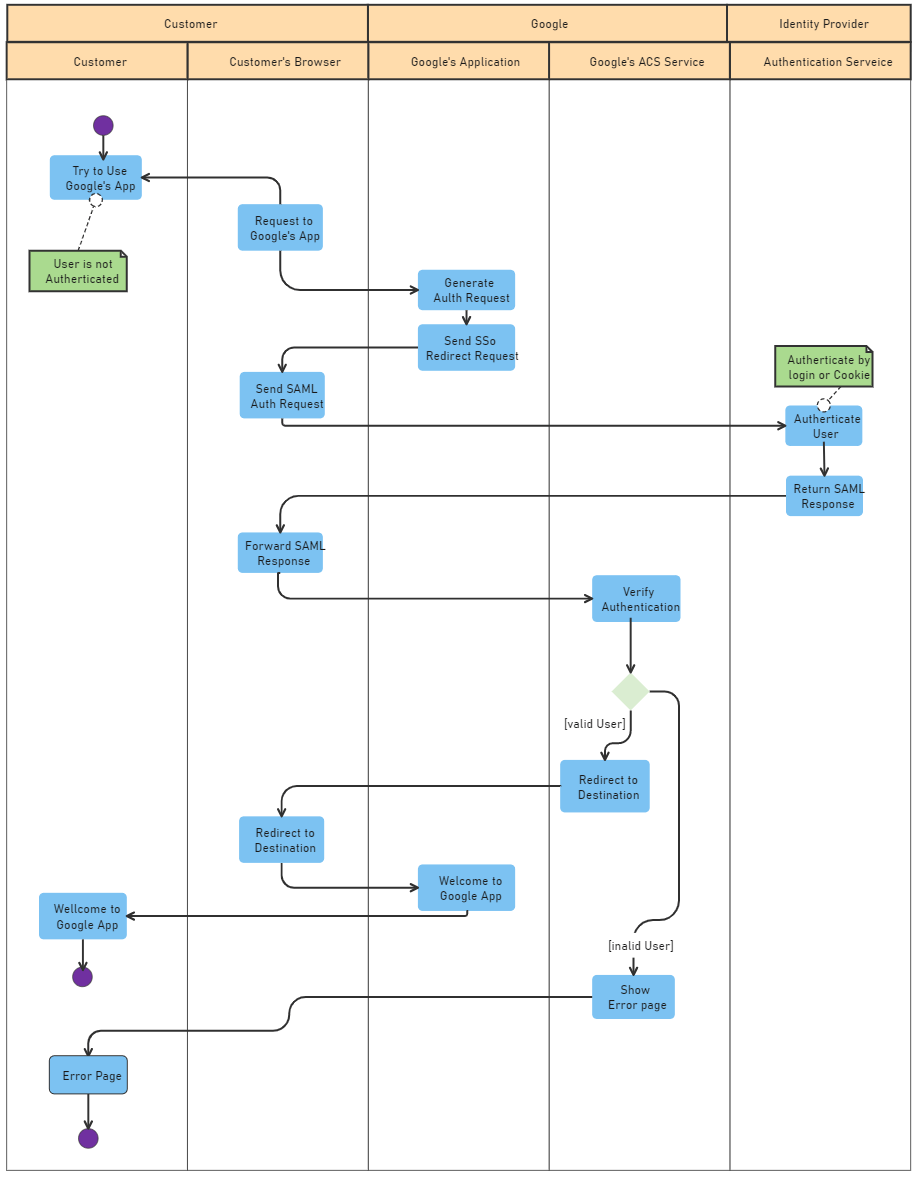
Example 3: Education
Four stakeholders are involved in the process: the Admin, SIS system, teacher, and the student. The SIS system and the admin are responsible for adding new students and uploading articles related to daily lectures conducted in the class. When the user logs into the system, the virtual classroom interface pops up on the screen upon login success.
The teacher is responsible for scheduling the class, tracking the students' attendance, and issuing notice whenever an announcement needs to be made. On the other hand, the student is responsible for attending the class, going through the learning material, and reading important notices.
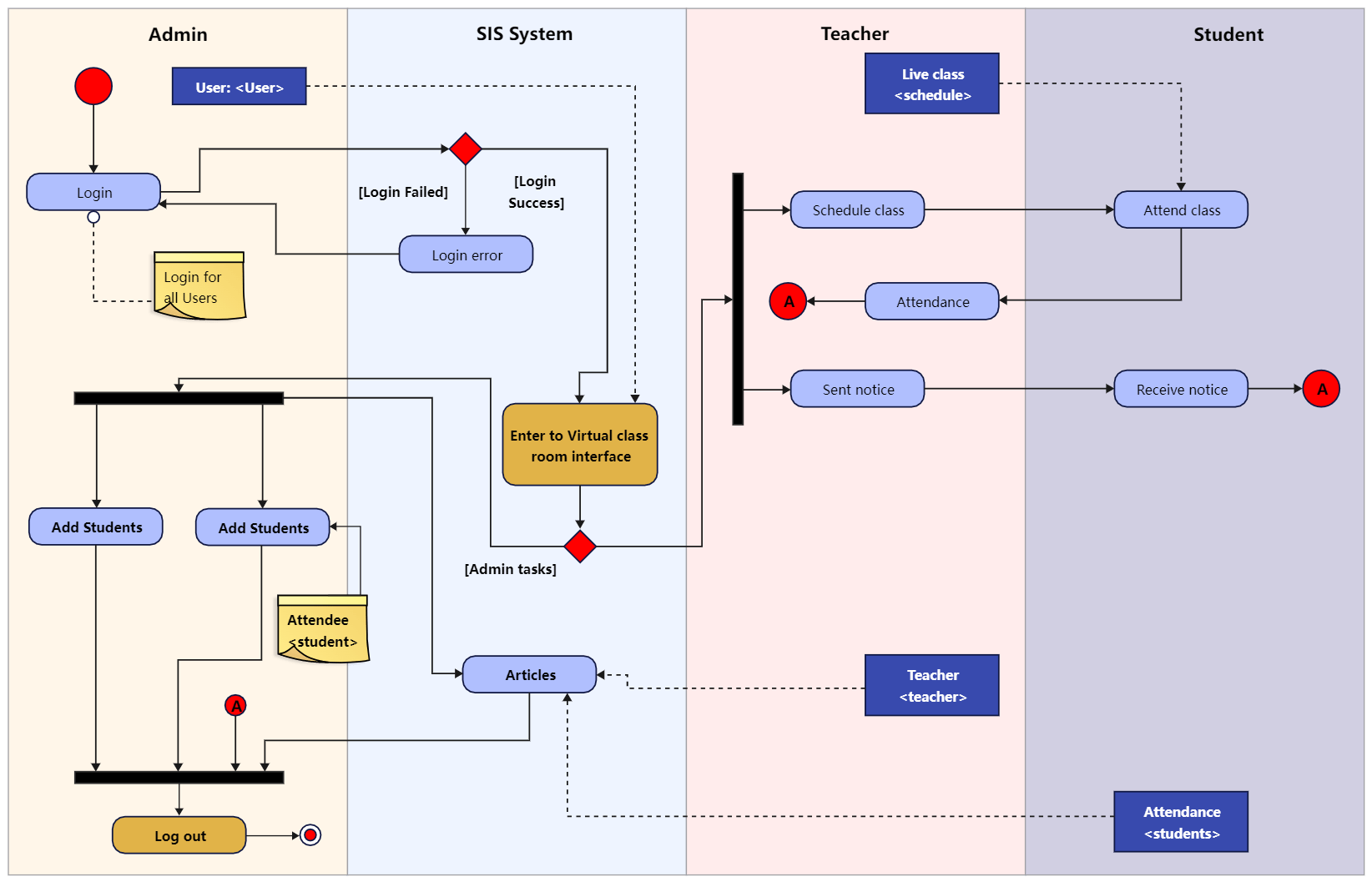
Example 4: Finance
The finance departments widely use swimlane diagrams to portray their financing processes. The above chart breaks the whole financial process into three lanes: daily procedure, period-end procedures, and financial reporting procedures. The daily procedures include; posting the source document into the general ledgers or general journal and creating a voucher.
The period-end could be the end of the month or the end of the year. Here, the vouchers from previous days are being recorded into the general ledger, and all the vouchers are being filed up in a journal voucher file.
The financial reporting procedures include all the tasks that need to be done to showcase the financial report to the board of directors or shareholders. Here, trial balance, adjusted trial balance, financial statements, and closing entries are being made by the accountants, after which the company closes its fiscal period.
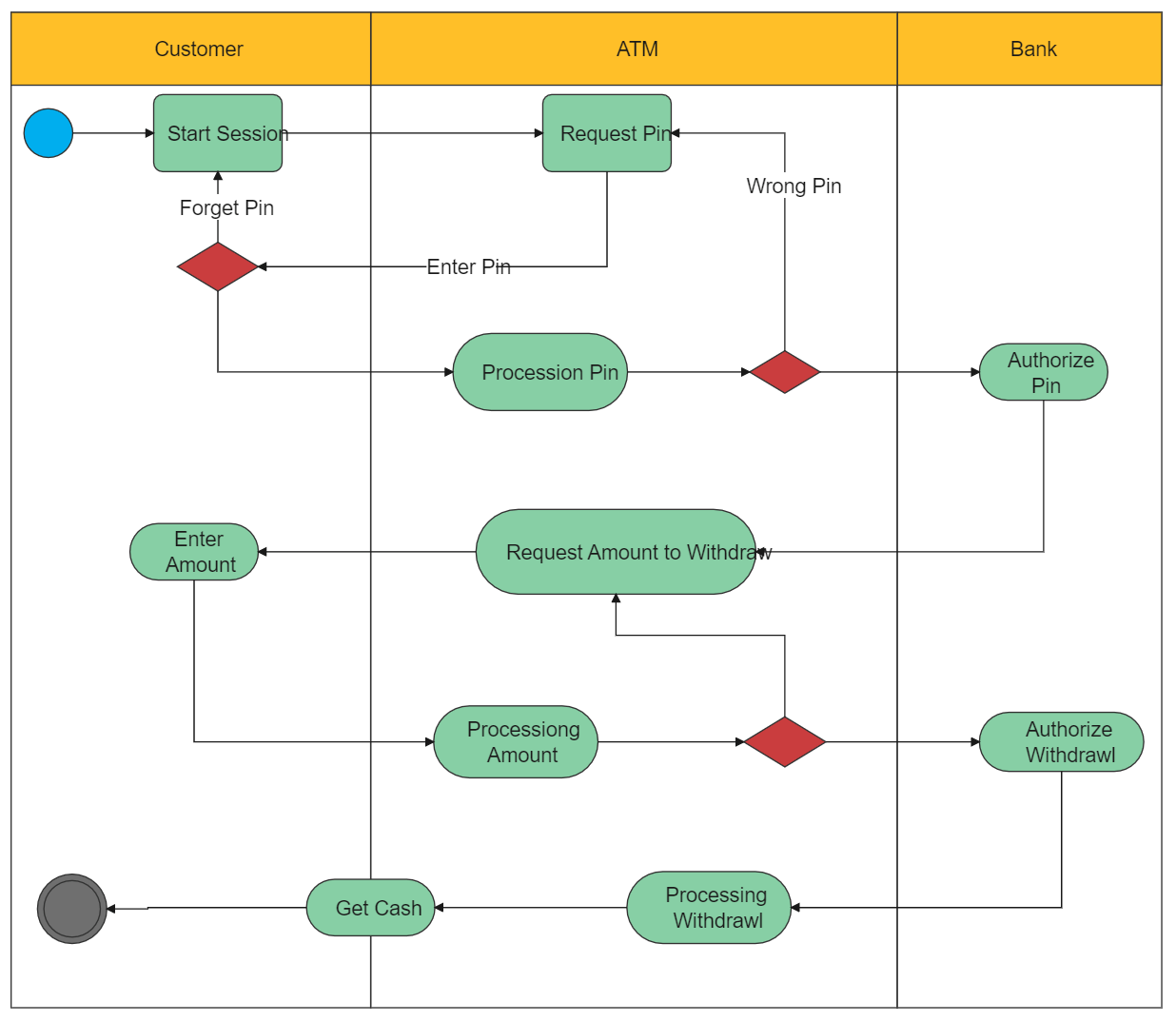
5. Benefits of Using Swimlane Diagrams
Some of the most common advantages of using swimlane diagrams include:
Transparency
Since all the steps of all the departments involved in the process appear in one illustration, a Swimlane Diagram offers absolute transparency, thus eliminating any chance of errors or confusion in the course of achieving the goal.
Clear Picture
A swim lane diagram can reflect a clear picture of the whole procedure that is practiced to complete a particular task. Usually, such a diagram is quite helpful during startups, where thorough planning is required.
Redundancy Elimination
Because all the sub-processes are visible in a Swimlane Diagram, the chances of a particular task being erroneously repeated by different people or departments are eliminated.
Process Integration
Using a Swimlane Diagram, the management, authorities, and the administration can easily integrate the tasks of one department with another, or combine multiple processes to save time. Once such planning is done on papers, the implementation becomes relatively simple.

6. How to Create a Swimlane Diagram?
Creating a swimlane diagram requires a decent amount of plans where several points are to be jotted down before grabbing the chart paper for the real drawing. Some key points to keep in mind before and while preparing a Swimlane Diagram include:
1. Assess Your Expectations
The first thing that you must do before starting with a Swimlane Diagram is to understand and assess what is that you would like to achieve. This step is important because your entire workflow will depend on the goal of the whole practice.
2. Fragmentation
Here you must decide which process and its corresponding sub-process will fall under which department and whether that department will be a different sector altogether in your production house, or will work as a subdivision of a parent section. In the former case, the division can be represented as a separate swim lane in your diagram.
3. Reviewing
Once the blueprint of your production is complete, you must invest some more time in it for reviewing and assessing if there is any room for further improvements to make the process more efficient and prolific.
Once all the planning is done, you can go ahead move on to the next stage where you must draw a Swimlane Diagram for your business. The instructions are given below explain how to use an efficient application like EdrawMax Online, a web tool, to prepare a practical and clear swim lane chart with least efforts:
Step 1: Pick a Swimlane Diagram Template
Launch your favorite Internet browser, go to https://www.edrawmax.com/online/, sign in to your account if not already done yet, select Flowchart from the center pane, click the Cross Functional Vertical or Cross Functional Horizontal (used here for demonstration) tile from the upper area of the right pane, and choose your preferred swim lane diagram template from the lower section.
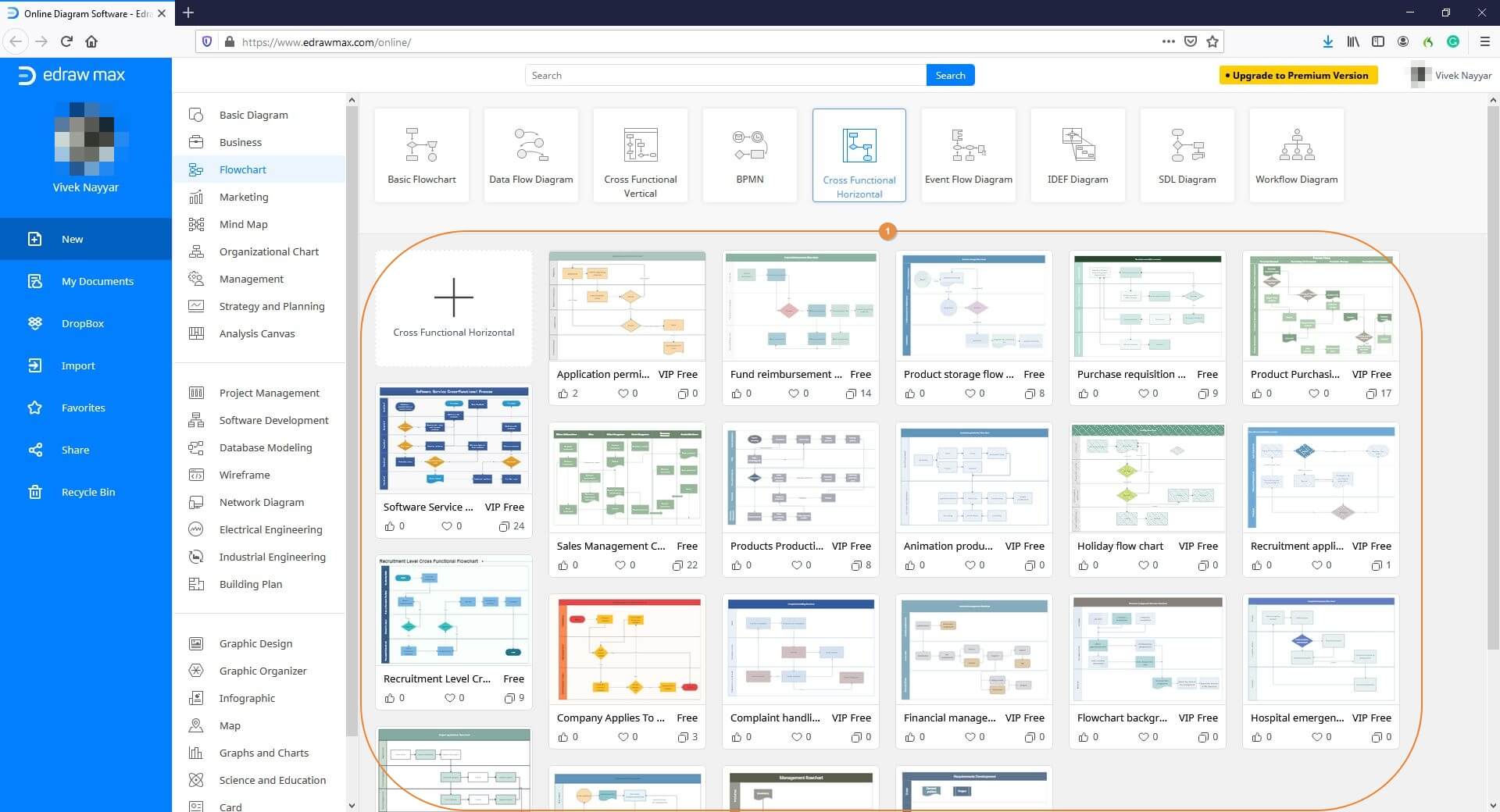
Step 2: Make Required Adjustments
On the next page, double-click any of the existing shapes or labels in the work area to rename or change it. Optionally, drag the new icons from the left pane, and customize their attributes using the tools present in the right section of the page.
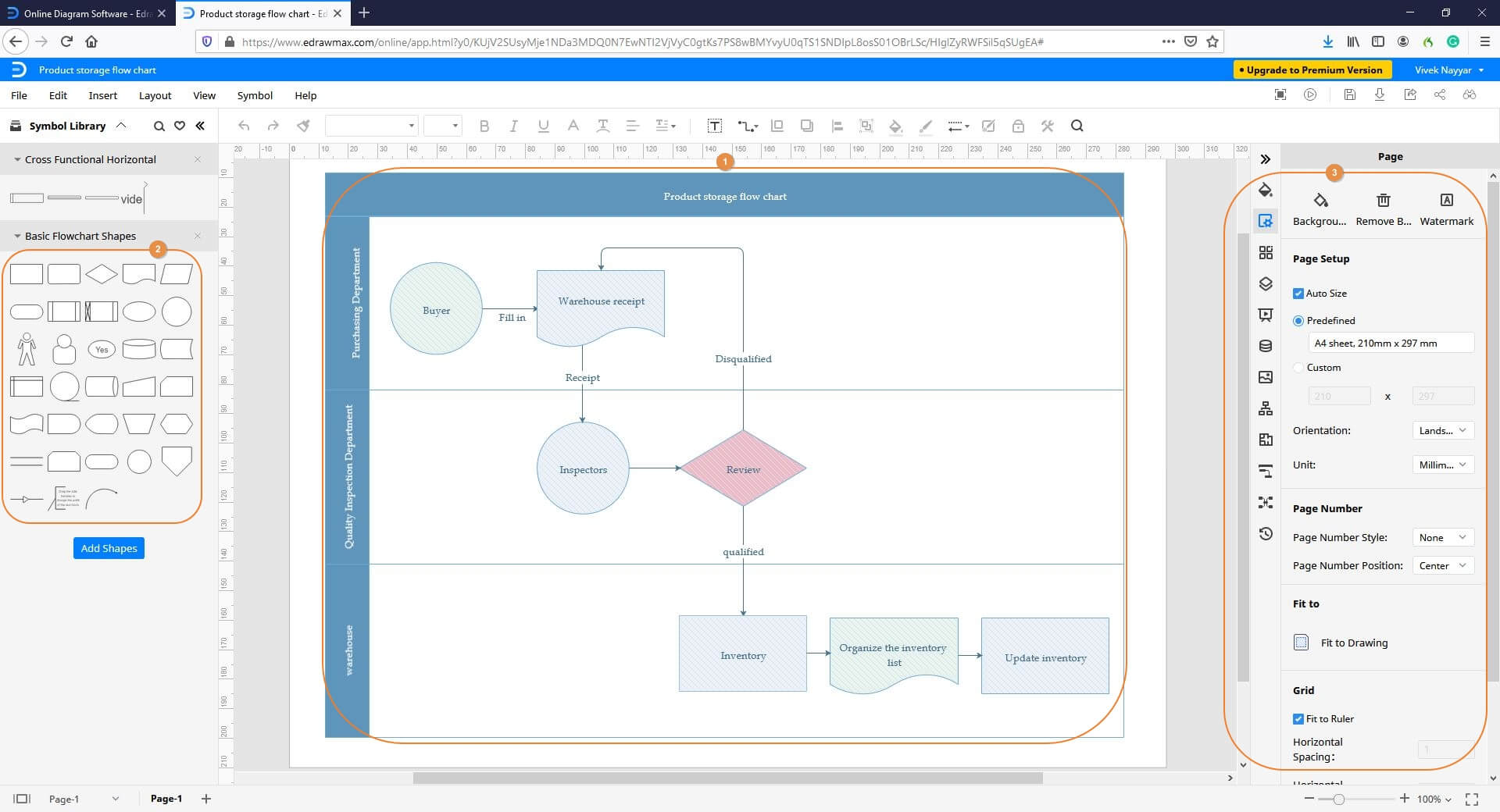
Step 3: Export the Diagram
Click File from the upper-left section of the page, go to Export from the menu that appears, and choose your preferred option from the submenu that comes up next to export the Swimlane Diagram in your preferred format.
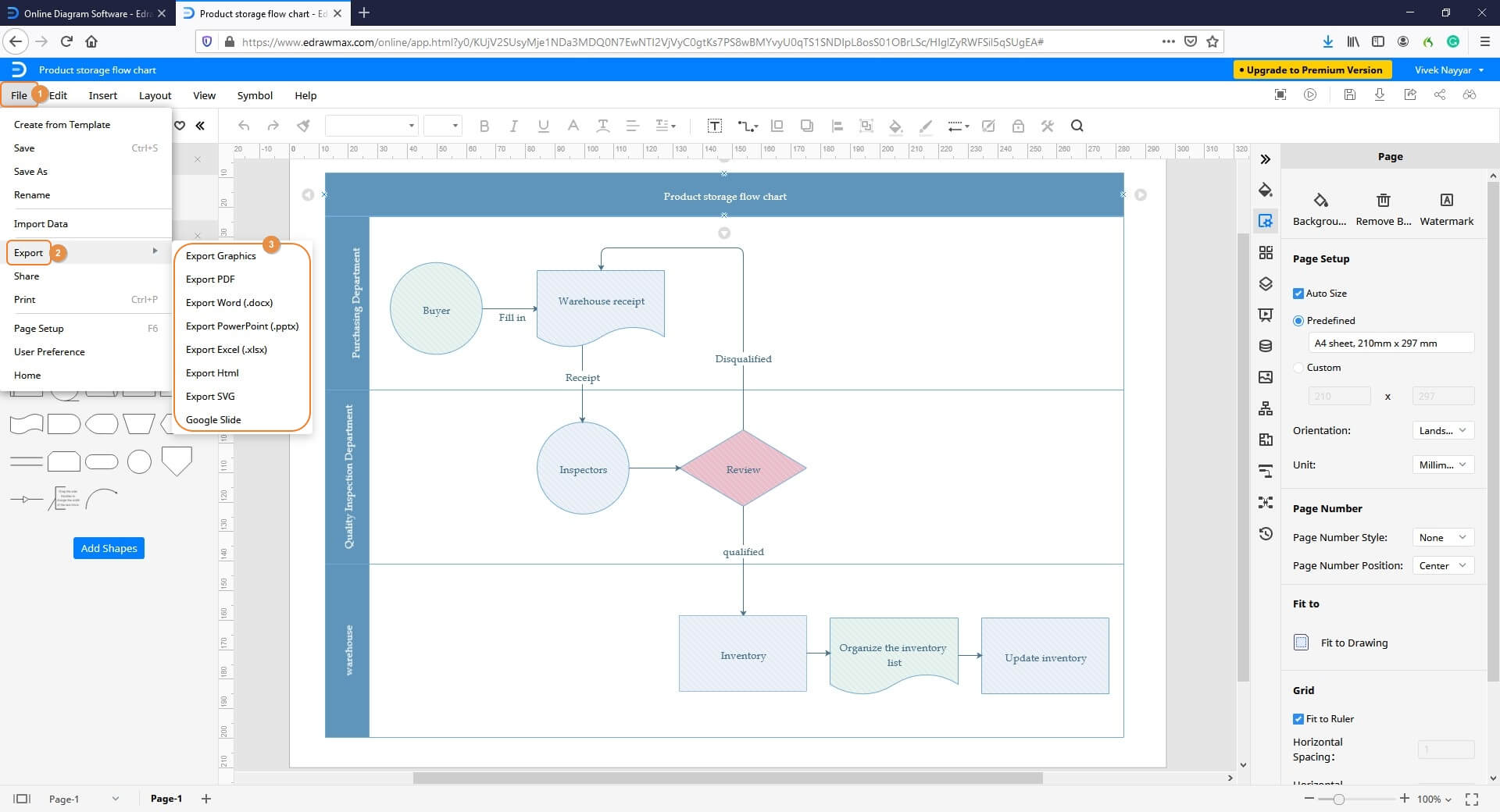
Important: You should be careful while renaming the swim lane that the diagram has. Incorrectly labelled lanes or shapes may jeopardize the entire workflow, and you may experience inconsistencies and post-implementation. Therefore, it is imperative to follow the points explained at the beginning of this section before you actually dive in and start preparing a Swimlane Diagram for your business.
7. Online Swimlane Diagram Maker
A swimlane diagram plays a vital role while planning a new business or to increase the efficiency of an existing one. Furthermore, things can become even more straightforward with an efficient diagramming tool like EdrawMax that not only saves your decent amount of time. It also offers free templates to produce basic-to-complex swim lane diagrams.


